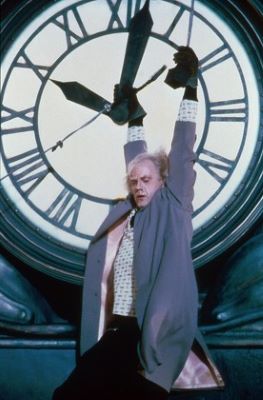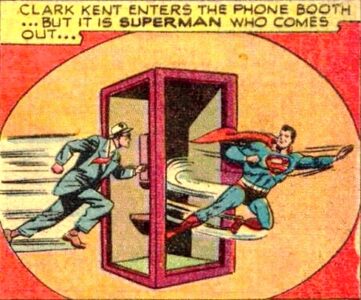
Why do newscasters still refer to the “top of the hour” and the “bottom of the hour” in a digital world? Do they think their audiences understand the literal meaning of those terms yet alone their symbolic importance like “above the fold” to people who do not read newspapers? Language lingers even as technology moves on.
Here is a reader letter in response to an article by Drew Gilpin Faust “Gen Z Never Learned to Read Cursive” (The Atlantic, October 2022).

Drew Gilpin Faust’s article on students’ inability to read cursive reminded me of a similar lack of knowledge that I encountered years ago, when I was teaching at the University of Colorado. I had assigned my students timed presentations. There were no clocks in our classrooms (supposedly too distracting), so I brought in a portable analog clock. To my surprise, none of my students could read it—they only told time on their cellphones.
It seems like an amusing incident worthy of a chuckle rather than a concern. Presumably they can read the analog gas and speed gauges on their cars if they have them so they know when they to stop and refill their car or to slow down to avoid a ticket.
Now think of old people taking their annual Medicare physical. As part of the exam, their mental acuity is tested. They are asked to write on the blank face of clock where the long and short hands would be at a specified time. The question, of course, presupposes that the patient is familiar with analog clocks unlike those students above and can position the hands accordingly. That assumption may be true now, but there may come a time when patients lack such knowledge and look at the medical assistant with a blank face. What then?
Here’s a recent example. Russia is bombing Ukrainian energy facilities to weaponize the cold and darkness. According to a reporter, Ukrainians manage to survive the assaults because to repair vital equipment, engineers are working “round-the-clock” (Ukraine Targets Russian Oil Plants with Drone Attacks,” NYT January 20, 2023). Not “non-stop” or “continually” but “round-the-clock.”
ODY
Ody has landed. It is on the moon. Naturally people are expected to know that “Ody” is short for “Odysseus” and who Odysseus is. Ody is routinely described as being the size of a telephone booth. To which the logical reply is “What is a telephone booth?”

Today (May 23, 2022), The City of New York, and CityBridge, the consortium behind LinkNYC, removed the final New York City public pay telephone on 745 7th Avenue in an event open to the public. The payphone will find its next home at the Museum of the City of New York where the newly installed exhibit Analog City looks back at life in the city before computers, just as New York City expands digital connectivity for all….
This last removal will mark the end of the payphone era, with the exception of private payphones on public property and four permanent full-length Superman booths (The City of New York and LinkNYC Usher in the Next Generation of 5G Connectivity).
SOS
Now consider the well-known “SOS,” short for “Save our ship” from its maritime origin. Once upon a time in the movies, when people were trapped and needed to communicate with potential rescuers, there was one person in the group who knew Morse code. Through a series of dots and dashes the isolated people could communicate information that directly contributed to their rescue. Today, people could openly use Morse code to communicate secure in the knowledge that no one around save their friends would understand what was being communicated … or that anything was being communicated. They might just think you were playing a drum and not insulting them in code.
Here’s another letter in response to the article by Faust.
Recently, I was scribing gift notes at a retailer in New York City and a teenage boy watched over my soldier curiously as I used an oblique dip pen and inkwell. I was shocked when he asked me what language I was writing in: I realized that to kids who haven’t learned script, I may as well be writing in cuneiform. Perhaps there is a future for me in antiquities translation.
In New York, where I live, that is an archive of Dutch texts in Albany at the State Library. They are in script. They are from the 1600s and 1700s. In other words, few people can decipher those markings and the main person is in his eighties. What happens next?
One final observation by Faust: although she is an inveterate note-writer, she learned that her students cannot read the hand the handwritten comments of their teachers … so they ignore them!
DOOMSDAY CLOCK

One final example from a current news item. From the website of the Bulletin of the Atomic Scientists:
The Doomsday Clock is a design that warns the public about how close we are to destroying our world with dangerous technologies of our own making. It is a metaphor, a reminder of the perils we must address if we are to survive on the planet.
When the Doomsday Clock was created in 1947, the greatest danger to humanity came from nuclear weapons, in particular from the prospect that the United States and the Soviet Union were headed for a nuclear arms race. The Bulletin considered possible catastrophic disruptions from climate change in its hand-setting deliberations for the first time in 2007.
In the early days, Bulletin Editor Eugene Rabinowitch decided whether the hand should be moved. A scientist himself, fluent in Russian, and a leader in the international disarmament movement, he was in constant conversation with scientists and experts within and outside governments in many parts of the world. Based on these discussions, he decided where the clock hand should be set and explained his thinking in the Bulletin’s pages.
When Rabinowitch died in 1973, the Bulletin’s Science and Security Board took over the responsibility and has since met twice a year to discuss world events and reset the clock as necessary. The board is made up of scientists and other experts with deep knowledge of nuclear technology and climate science, who often provide expert advice to governments and international agencies. They consult widely with their colleagues across a range of disciplines and also seek the views of the Bulletin’s Board of Sponsors, which includes 10 Nobel laureates.
Once upon a time, the clock stood at 17 minutes to midnight. This was right after the Cold War end with the collapse of the Soviet Union. Now it stands at a mere 90 seconds to midnight. On January 23, 2024, at 10:00 A.M., we will learn where the hands stand on the analog clock. Given the current military actions involving China, Iran, Israel, Pakistan, Russia, the United Kingdom, and the United States, the prospects do not good for setting of the clock. Of course, many people will not understand what moving the hands on the clock means or understand the symbolism of the stroke of midnight.
At least people know how to count backwards from ten!
NEW YEARS

America welcomes in the New Year in style! Fireworks explode across the night sky on the East Coast as the clock strikes 12 and brings in 2024 – as Times Square’s iconic ball drop passes without incident despite fears of pro-Palestine protests (The Daily Mail/Reuters)
There is at least one time when people can read the face of an analog clock and know what the hands mean: New Years. Digital clocks don’t strike 12.






